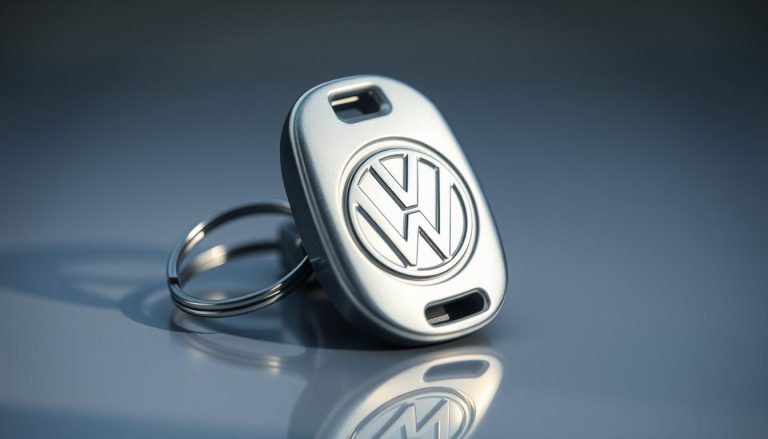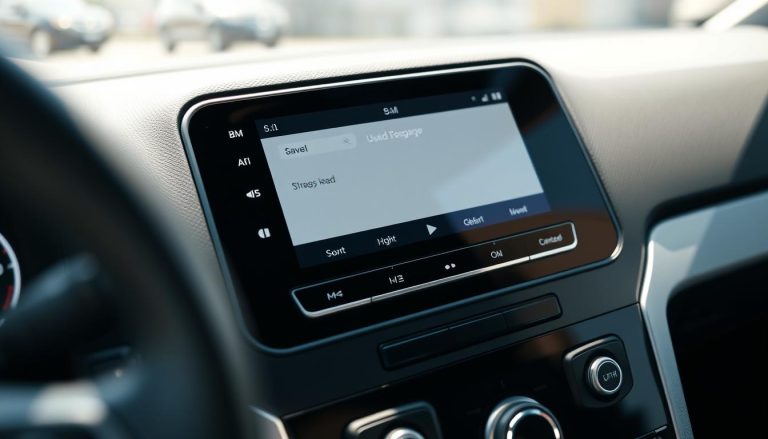This short guide explains what happens when you swap a car battery and how to get systems working again. Owners often worry that the engine computer needs a complex intervention. In most late-1990s models, the ECU relearns idle and throttle as you drive.
Common tasks include re-entering the radio code and reinitializing one-touch windows. Some drivers of later models report a no-start condition. Basic power checks and a quick diagnostic scan usually fix that.
When to see a dealer: dealer-level service can register a new battery with factory tools and prevent warning lights or wrong charge readings. Follow your owner’s manual and use simple safety steps to protect power and memory during the change.
Key Takeaways
- Re-enter radio code and reset one-touch windows after a battery swap.
- Most engine computers relearn idle while driving; complex resets are rare.
- Perform basic voltage and start checks before assuming a bigger fault.
- Dealer battery registration helps avoid warning lights and incorrect charge reports.
- Keep the owner’s manual and a scan tool handy for quick troubleshooting.
What This How-To Covers and Why It Matters Right Now
This guide explains the full procedure for a safe car power change and the quick steps to follow so your systems return to normal without needless warning messages.
You’ll learn which tasks need manual input—like entering the radio code, relearning one-touch windows pinch protection, and setting the clock—versus the engine computer adjustments that typically relearn during a brief drive.
We also show when a dealer-level procedure is useful, especially if a persistent message or odd charge readings appear. Basic checks of terminals, key recognition, and power help avoid a no-start before you seek a scan tool or shop service.
- Scope: prep, safe change, immediate resets, and a short drive cycle.
- Practical checks: key position, connections, and power report readings to limit repeat trips.
- Expectations: temporary rough idle or messages may be normal while the computer relearns.
What Typically Resets on a VW After a Battery Change
Many VW owners find several convenience systems lose memory when power is cut for a service event. Expect a few simple restarts of items that store settings in retained modules.
Radio code, presets, and infotainment settings
Most models will lock the radio until you enter the radio code. Re-enter the code to restore audio and then reprogram presets and Bluetooth. Keep the owner’s manual handy for the radio code location.
One-touch window and sunroof pinch protection
One-touch windows and sunroof limits often lose calibration. Fully cycle each switch up and down so the system stores end positions again. This relearn takes only a few seconds per window.
Engine computer adaptations like idle and throttle
The engine control computer can lose learned idle and throttle values. You may notice a rough idle for a short drive. In most cases, normal driving restores adaptations without tools.
When to involve a shop: later years with complex power management may show warning messages or incorrect charge reports. If prompts, immobilizer lights, or odd reports persist, a shop scan will identify modules that didn’t complete relearn.
| System | Common symptom | Quick fix | When to see a shop |
|---|---|---|---|
| Radio / Infotainment | Locked, no sound, lost presets | Enter radio code; re-pair Bluetooth | Code unavailable or module error |
| One-touch windows / Sunroof | Auto function stops; pinch not detected | Full up/down cycles to relearn limits | Switch or actuator fault |
| Engine computer | Rough idle, changed throttle response | Short drive to allow ECU relearn | Persistent limp mode or warning lights |
| Power/charging reports | Incorrect charge level or message | Verify terminals and charging output | Require dealer battery initialization |
Preparation: Tools, Safety, and Preserving Settings
A little prep prevents most faults—gather the right gear and follow a clear safety order. Proper setup reduces the chance of error messages and bad charge reports that can appear in later years.
Gather tools and power options:
- Correct sockets, a terminal brush, and gloves for safe handling.
- A quality charger or charger maintain option to stabilize power while changing battery components.
- Consider a memory saver to keep radio presets and clock; otherwise note codes from the manual.
Simple safety steps:
- Park, set the parking brake, and make sure the key is off; leave the door open or unlocked to avoid lockouts.
- Identify positive and negative terminals and protect nearby modules from shorts.
- If your charger supports supply mode, connect it and wait a few minutes for modules to sleep before you disconnect battery cables.
- Disconnect the negative first, then the positive; reverse on install to protect the ECU and starter circuits.
Quick checklist: document radio codes, lift the battery around level, and plan the procedure to save minutes and preserve power-sensitive settings the battery also supports.
How to Replace the Battery Safely and Correctly
Follow a clear, step-by-step process to swap the car power source safely and avoid module faults. Gather tools and the vehicle manual before you start, and work on level ground with the key out of the ignition.
Accessing and removing the old battery (negative first)
Open the door and expose the tray. Note cable routing so you can restore it later.
Make sure to disconnect battery negative first to lower short risk. Then remove the positive and unbolt the hold-down. Lift out the old unit carefully; avoid stressing nearby wiring or the door harness.
Installing the new battery and securing power/ground connections
Place the new battery in the tray and secure the hold-down to factory torque. Clean terminals and clamps before connecting.
Connect the positive lead first, then the negative. Verify all connections are tight and routed as the manual shows.
Using a charger/maintainer to stabilize voltage during the swap
If available, set the charger to supply mode and attach it before you disconnect. This keeps modules powered for a few minutes and limits the need to reprogram settings. A maintainer can also top up charge if the new battery sits for minutes before install.
Key turn and first start: what to expect on the dash
Before the first key turn, confirm accessories are off and no tools remain in the engine bay. Start the engine and watch the dash lights; many warnings clear within seconds.
Expect a prompt start. A short rough idle is normal while the engine control adapts. If lights stay on or crank is slow, stop and recheck connections and ground integrity.

| Step | Action | Why it matters |
|---|---|---|
| Prep | Gather tools, manual, and charger | Reduces mistakes and speeds the procedure |
| Disconnect | Negative first, then positive | Minimizes short and protects electronics |
| Install | Secure new battery, positive then negative | Restores stable power and avoids loose connections |
| Stabilize | Use charger/maintainer in supply mode | Prevents module faults and saves minutes on reprogramming |
| First start | Key turn, observe dash, verify charging | Confirms correct install and engine adapt behavior |
Reset Volkswagen After Battery Replacement: Immediate Post-Swap Steps
With power stable, follow a short checklist to restore cabin features and clear temporary messages before you drive. These quick actions get audio, windows, and time-based systems back to your usual settings.
Entering the radio code and restoring audio settings
Turn the ignition on and enter the radio code to unlock the unit. Once unlocked, re-add presets and re-pair Bluetooth devices so the car audio works as you expect.
Relearning window limits and pinch protection
Fully cycle each window: press down to the bottom, then up to the top, and hold briefly at each end. This lets the module relearn travel limits and restores one-touch and pinch protection. Repeat for the sunroof if equipped.
Setting clock, date, and time-based features
Set the clock and confirm scheduled functions like charging timers and maintenance reminders. If a startup message appears, acknowledge it and plan a short drive so modules can finish checks.
- After the first key turn and start car, verify HVAC, lighting, wipers, and steering assist operate normally.
- Note any persistent message or odd report for your records; it helps if a scan or dealer visit becomes necessary in later years.
Computer Relearns vs. Dealer-Level Battery Reset
A short mixed-route drive is the simplest way to let the car’s computers adapt after losing power. Plan a few miles that include stop-and-go city streets and some steady highway speed. This helps idle, transmission shifts, and sensor baselines normalize.

Short drive cycle to stabilize idle, transmission behavior, and sensors
What to expect: during the first trips you may notice slightly rough idle or firmer shifts. That usually clears once the engine control unit relearns throttle and timing maps.
- Drive 10–20 minutes with mixed conditions to speed relearn.
- Monitor dash reports and listen for unusual sounds.
- If roughness persists after several trips, document symptoms for the shop.
When a VW-certified shop should perform a battery reset with diagnostic tools and OEM parts
If a warning light or incorrect charge report stays on, a dealer or certified shop can run an initialization procedure with factory tools. Technicians register the new battery and clear stubborn codes so modules calculate charge and health correctly across cars, including TDI models.
“A proper procedure with OEM parts protects long-term electrical performance and reduces repeat visits.”
Troubleshooting: Won’t Start, Warning Lights, and Error Messages
If the car won’t start after a power service, begin with the basics. Confirm the ignition switch is in Park or Neutral, press the brake, and verify the key is recognized by the immobilizer.
Watch the dash during a key turn. Dimming or a clicking sound usually points to low power or a starter circuit issue. No response at all can indicate a switch or key recognition fault.
No-start: switch position, key recognition, and power checks
Inspect terminals for tight, clean connections. Measure voltage at the posts and test starter draw if possible.
Charge readings, alternator output, and lingering lights
Once you start car, confirm the alternator holds charge and that dash reports return to normal within minutes. Persistent charge messages or odd reports suggest a logged fault.
When to contact a dealer for codes and proper registration
Scan for codes to locate the fault. If DIY checks don’t get car running or warnings stay on, a dealer or qualified shop can retrieve codes and perform a battery registration or module adaptation.
- Try a spare key if immobilizer suspicion remains.
- Document persistent messages and report them to the shop or dealer.
- For TDI and other models, dealer tools often complete needed computer steps.
“If warnings persist, professional scan and registration usually clear logged codes and protect long-term reports.”
For documented guidance on stored fault codes and warning lights, see this diagnostic resource.
Conclusion
Complete a few final verifications and you’ll likely see normal operation within minutes and miles.
Confirm tight terminals, routed wiring, and that the tray is clean. Enter any radio codes and relearn window limits, then start the car and watch for persistent messages or odd charge reports.
If a warning or no-start remains, check starter function and grounds, note codes, and schedule help with a shop or dealer for registration of the new battery and module checks.
Thanks for following a careful process — these steps save time and protect systems for years. Thanks for using this guide to keep your car reliable.
FAQ
What should I do immediately after changing a car battery?
Check that terminals are tight and clean, then start the engine and let it idle a few minutes. Confirm the dash clears and the clock, radio, and power windows respond. If available, attach a charger or maintainer during the swap to keep voltage stable and protect electronic modules.
Will the radio need a code after a battery change?
Many factory radios require a security code if power is lost. Locate the code in your owner’s manual, separate card, or dealer records. If you can’t find it, a dealer or authorized shop can retrieve the code with the vehicle identification number (VIN).
How do I relearn one-touch window limits and pinch protection?
With the ignition on, fully lower each window using the one-touch control, then fully raise it while holding the switch for a second after the window closes. Repeat if needed. This calibrates the motor’s limits and restores pinch protection.
Does the engine computer need time to relearn after a battery change?
Yes. Drive cycles and idle time help the engine control unit relearn fuel trims, idle speed, and transmission shift points. A short mix of city and highway driving over 10–30 miles typically restores normal behavior.
Can I use a memory saver to avoid losing settings?
Yes. A memory saver or 12V maintainer connected to the OBD-II or cigarette lighter port preserves radio presets, seat positions, and ECU memory during the swap. Follow the device instructions and vehicle manual to avoid damage.
What safety steps should I follow when replacing the battery?
Turn the ignition off, remove the key, open doors to prevent automatic locks, and disconnect the negative terminal first. Wear eye protection and gloves, and keep metal tools away from battery posts to prevent shorts.
Why might the car not start after installing a new battery?
Common causes include a loose terminal, corroded connector, incorrect battery type, or key not recognized by the immobilizer. Recheck connections, ensure the battery meets OEM specs, and try the key sequence. If the problem persists, check fuses and consult a shop.
When should a dealer perform a battery reset with diagnostic tools?
If warning lights persist, electronic features don’t return, or the vehicle requires adaptation resets for hybrid/battery management systems, a VW-certified shop should run a dealer-level battery registration and adaptation procedure using OEM diagnostic tools.
How do I set clock, date, and time-dependent features after a power loss?
Use the infotainment or instrument cluster menu to set time and date. Some models update the clock automatically once GPS or radio signal returns. Verify alarms, scheduled service reminders, and navigation preferences afterward.
What diagnostics help if dash lights or codes remain after the swap?
A scan tool reading stored and pending trouble codes helps pinpoint issues. Clear codes after confirming the underlying fault is fixed, then perform a drive cycle to see if codes return. Persistent faults require further testing of sensors, alternator, or wiring.
Is it necessary to use the same battery group size and type as the original?
Yes. Use the manufacturer-recommended battery size, cold-cranking amps (CCA), and terminal layout. Incorrect batteries can cause fitment, grounding, or charging problems and may trigger electronic faults.
How long should I run the engine or drive after a battery change to stabilize systems?
A brief idle for several minutes helps stabilize voltage and modules. Expect several drive cycles—typically 10–30 miles over mixed conditions—to fully relearn fuel trims, idle control, and transmission adaptations.
Can disconnecting the battery erase security features like key programming?
Modern key fobs remain programmed, but some immobilizer systems may require a key recognition sequence or dealer intervention if the vehicle doesn’t accept the key after power loss. Try all keys and follow the owner’s manual for key reinitialization steps.
What tools and equipment should I have before attempting a battery change?
Basic hand tools for terminal and hold-down removal, a battery charger or maintainer, terminal cleaner, protective gloves, and a memory saver are recommended. Keep the owner’s manual and radio code handy.
Who do I contact if I’m unsure about performing the swap or resolving post-swap errors?
Contact an authorized Volkswagen dealer or experienced independent shop familiar with VW electronics. They can perform battery registration, adaptations, and diagnostics that require dealer-level software and OEM parts.


